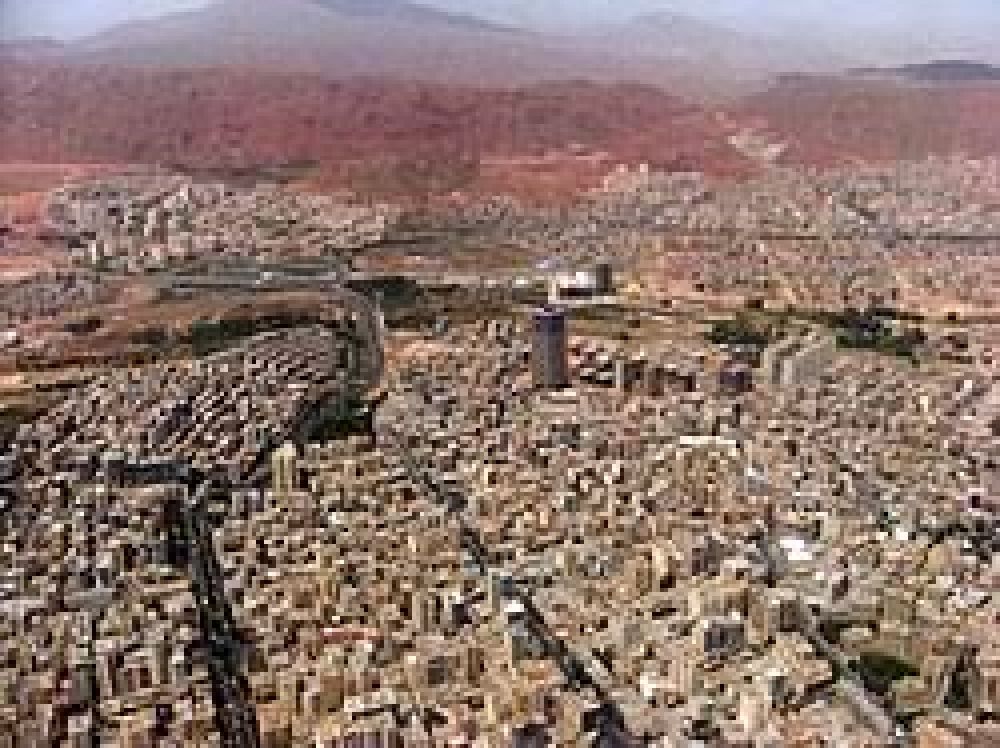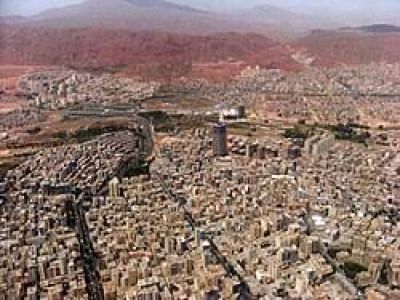

The Tabriz Historic Bazaar Complex is a sprawling marketplace that has been the commercial heart of Tabriz for centuries. Recognized by UNESCO as a World Heritage Site, this bazaar is not only an architectural masterpiece, but also a place where visitors can experience the vibrant culture and traditions of the region. The complex houses a variety of businesses, from carpet vendors and jewelry merchants to spice shops and teahouses, all intertwined with a network of historic corridors and caravanserais. Walking through the bazaar, guests will witness the hustle and bustle of daily commerce, as well as artisans at work, creating traditional crafts that have been perfected over generations. The bazaar is also a social hub where locals gather, making it an ideal place to interact with residents and learn about their way of life.
The Blue Mosque, also known as Masjed-e Kabud, is a stunning historical site located in Tabriz. The mosque's original construction dates back to the 15th century; however, due to an earthquake in 1779, much of it was destroyed. It has been partially reconstructed and is renowned for its intricate blue and turquoise mosaics that adorn the mosque's walls and dome, hence its moniker. The mosque also features beautiful calligraphy of Islamic verses. Visitors can explore the site and admire the artistry of the mosaic tiles and the grandeur of Islamic architecture. The mosque provides a serene atmosphere for both reflection and appreciation of Persian history and architectural traditions. Due to its artistic and historical significance, the Blue Mosque is not only a religious site but also a cultural treasure of Iran.
El Goli, also known as Shah Goli, is a beautiful park situated in the southeast of Tabriz and is one of the city's most famous landmarks. The park's centerpiece is a large artificial lake that houses a grand hexagonal mansion in the middle, reminiscent of the traditional Persian pavilions. Surrounded by lush gardens, the park serves as a recreational area where families gather, picnic, and enjoy boat rides on the lake. Throughout the year, El Goli provides a peaceful escape from the urban hustle, inviting visitors to relax amongst the flowers, tall trees, and fountains. The site also features several restaurants and cafes where one can relish local Azerbaijani cuisine while taking in the picturesque scenery. Visiting El Goli is a delightful experience, combining recreation with a touch of history and a scenic landscape ideal for photography.
The Azerbaijan Museum is the major archaeological and historical museum in Tabriz, housing a collection that spans the history of the region. With three galleries, the museum showcases a wide array of artifacts, including pre-Islamic and Islamic-era pottery, coins, sculptures, and various remnants of historical significance. One of the highlights includes the pottery recovered from Hasanlu, an archaeological site of an ancient city. The museum also dedicates spaces to contemporary art, featuring paintings, sculptures and other artworks from regional artists. This museum provides a comprehensive overview of the cultural heritage of the Azerbaijan region, from ancient civilizations through the Islamic period to the present day. It's an essential visit for history buffs and anyone interested in understanding the depth and diversity of Iran's regional cultures.
Located about 60 kilometers away from Tabriz, Kandovan is a unique and ancient village that offers a glimpse into the lifestyle of its inhabitants that have changed very little over the centuries. This remarkable place is known for its homes carved into volcanic rocks, which resemble dwellings you might find in the famed Cappadocia region of Turkey. Some of these rock houses are over 700 years old and are still inhabited today, giving Kandovan a living, breathing sense of history that is rare and fascinating. The village also boasts a tranquil natural setting and a mineral water spring acclaimed for its therapeutic properties. Visiting Kandovan Village not only provides insights into the architectural ingenuity of its inhabitants but also allows for interactions with locals and the opportunity to purchase handmade crafts and products, such as honey and herbal remedies.
The Qajar Museum, also known as Amir Nezam House, is an excellent example of Qajar era architecture and a well-preserved historical residence in Tabriz. This two-story building includes numerous rooms, each adorned with ornate stucco work, intricate mirror decorations, and colorful window glasses. The museum was once the house of Amir Nezam Garroosi, an influential figure during the Qajar period, and today it displays a variety of historical documents, calligraphy, paintings, and photographs pertaining to the city's history. The charming garden and courtyard add to the serene atmosphere, making it an engaging and peaceful setting for visitors. The museum is not only a reflection of the affluent lifestyle of the Qajar aristocracy but also a cultural institution that offers a window into the rich history of Tabriz and the wider region of Azerbaijan within Iran.
The Constitution House of Tabriz, known as Khaneh Mashrouteh, stands as a historical edifice commemorating the Constitutional Revolution in Iran (1905–1911). This two-story building was originally the residence of Haj Mehdi Koozekonani, a merchant who supported the constitutional movement. It has been transformed into a museum that showcases photographs, documents, and items belonging to key figures involved in the revolution. The structure itself is a characteristic example of the architectural style of the period, with its ornate rooms and intricate decorations. Visitors can walk through the rooms, which have been carefully restored and maintained to reflect the atmosphere of the era. Exhibits in the Constitution House offer invaluable insights into the struggle for democracy and justice in the early 20th century Iran, making it an important landmark for those interested in the country’s political history.
Saat Tower, also known as the Tabriz Municipality Palace, is an iconic building situated in the heart of the city. Built by the Germans during the second Pahlavi period, it serves both as the city hall and a local museum. The clock tower is the building’s most notable feature, visible from various points around the central district. Within the building is the Municipal Museum where artifacts and documents related to the city's history are displayed. The architecture of the building is a curious blend of modern and traditional elements, and the surrounding Saat Square is a popular gathering spot for citizens and tourists alike. The museum provides a glimpse into the urban development of Tabriz over the years and offers a diverse collection ranging from ancient pottery to photographs and city plans.
The Iron Age Museum in Tabriz is a lesser-known but captivating destination, focusing on artifacts and burial traditions from the Iron Age. Located near the Aji Chay Bridge, the museum is housed in a covered archaeological site where an ancient cemetery was discovered. Visitors can view a fascinating array of burial items, pottery, metal tools, and ornaments that provide insights into the life and death customs of the people who lived in the region over 3000 years ago. The preservation of the site adds to the intrigue as one can witness the original excavation area. Skeletons are still in situ in their tombs, offering a direct connection to the distant past. The museum affords a valuable learning experience that demonstrates the historical importance of the Tabriz region and the sophisticated cultures that existed there during the Iron Age.
The Poets' Mausoleum, or Maqbaratoshoara, is a testament to the rich literary heritage of Iran. Situated in the Surkhab district of Tabriz, this mausoleum houses the tombs of over 400 poets, mystics, writers, and other notable figures from the region. The architecture of the building is both austere and grandiose, featuring a fusion of modern and traditional Persian designs. Inside, the harmonious arrangement of graves, memorial plaques, and ornate inscriptions pay homage to the individuals who have shaped Persian literature and culture over the centuries. Visitors to the mausoleum will find a contemplative environment that celebrates the legacy of Persian scholarship and artistry. It is not only a place of rest for these esteemed individuals but also a cultural centerpiece that aptly reflects the reverence for knowledge and creativity inherent in Iranian culture.
